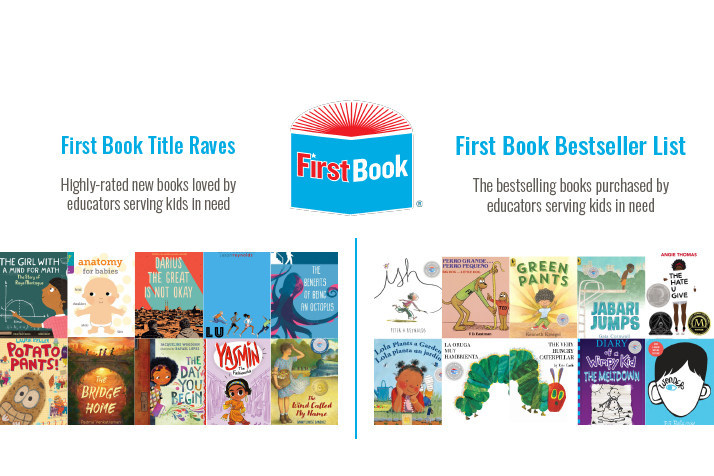This is a blog series dedicated to the frequently asked questions we get during the Ask Me Anything About Social Enterprise (AMAASE) sessions (to learn more about AMAASE see below).
One frequently asked question is “what is the definition of social entrepreneurship?”
Side note: the definition question is often confused with the issue of the legal structure of a social enterprise (another frequently asked question). They are related issues, but separate. Social enterprises can be any legal structure – for-profit, non-for-profit, charitable, cooperative, B-Corp etc. We will talk more about legal structure in another AMAASE blog.
Trico Charitable Foundation (TCF) defines social entrepreneurship as using business models to serve social needs/problems. Social entrepreneurship is the activity, social enterprise is the organization or venture, and social entrepreneur is the person.
TCF’s definition is very similar to most Canadian definitions. For example, the Social Enterprise Fund uses the Canadian Task Force on Social Finance definition of social enterprise:
“any organization or business that uses market-oriented production and sale of goods and/or services to pursue a public benefit mission.”
TCF actually drew its inspiration from the Canadian Task Force, we just use less words.
We have surveyed almost 100 Canadians on their definition of social entrepreneurship. Ninety-percent of respondents use their own unique wording, but almost all come down to the idea of using business models to serve social needs.
Some suggest we have a definition problem because there is no official definition. We believe that whenever you are talking to someone, especially a funder or government, you need to look at what their specific definition is. That said, because most of us get what social entrepreneurship is basically about, TCF doesn’t think we have a definition problem, we think we have an aspiration problem.
For almost any idea or thing, the definition of that idea or thing is the most boring part. It’s important, don’t get us wrong, but the real action, the excitement, is not in what something is, it’s in what you want to do with it, where you want to take it – in short, your aspiration.
TCF invites you to think about where you want to take your social enterprise (or your social enterprise idea). We invite you to consider four possibilities. Please note: TCF is not saying you should proceed with any of these options over the other. You have to do what works for you. That said, we believe people will be better able to determine what works best for them if they are aware of all the options.
- Option 1: Using social enterprise to enhance your organization
The most common situation here is where a social impact organization has a funding problem – funding is low or has been cut – and wants to use social enterprise to generate revenue.
- Option 2: Using social enterprise to transform your organization
This is where you use social enterprise to radically change your organization, using business models to take both your organization’s financial sustainability and social impact to a whole other level.
You may be wondering, “what is the difference between enhancing my organization and transforming my organization?” It’s a great question and they can be hard to distinguish, but the key is enhancing your organization is easy to imagine, it’s thinking about your organization as essentially the same but being just a bit better as a result of a social enterprise. A good analogy comes from Henry Ford, the inventor of mass manufacturing of cars, when he said, “If I had asked people what they wanted they would have said ‘a faster horse’.” Remember, this was before cars were common, where the most common mode of transportation was by foot or horse. Back in those days if you had a horse, imagining how a faster horse could improve your life would be easy – you are thinking about what you have and just making it a little bit better. A car would be beyond your wildest dreams. When you first would have heard about the idea of a car your best guess may indeed have been “oh, it’s just a faster horse”, but in reality cars were going to transform your life and your world.

In a moment we will provide a real-life social enterprise example of the difference between enhancing your organization (thinking ‘faster horse’) and transforming your organization (thinking ‘car’). Also keep in mind distinctions can be hard. With any distinction there are usually gray areas where it is really hard to tell in what category something will land. In that situation, as long as you have a reason for which category you are picking you will be fine, the more important thing is that you are alive to the options (the categories).
- Option 3: Using social entrepreneurship to transform the social issue you are working on
Transforming a social issue is being talked about more and more. It’s the idea of systems change, of getting at the root of a problem rather than just treating the symptom/providing a band aid (although treating symptoms and band aids have their place). Again, we will provide a real-life example in a moment.
- Option 4: Using social entrepreneurship to transform capitalism
Many of you may be thinking, “Hold on, I am just trying to get a social enterprise off the ground, I don’t have the time, resources, or money to take on capitalism.” At TCF we hear you, we promise we do. But right now a rabid focus on profit maximization has a grip on capitalism, and therefore the world. That’s spurring greed and seeing everybody and everything else as commodities – as means to an end. In turn, that leads to extraction that is devastating our planet and selfishness that is dividing us/turning us against each other. The importance of these bigger themes was highlighted at the 2023 Social Enterprise World Forum:
“Are we changing the system or is the system changing us?” Stefan Panhuijsen, director of Social Enterprise NL
“We’re too often seen as an enterprising part of civil society rather than a challenge to the fundamental principles of capitalism.” Peter Holbrook, CEO of Social Enterprise UK
Source of both quotes: “‘At the forefront of the new economy’: Social Enterprise World Forum 2023 sets out ambitions for social enterprise movement” Post Reporters 28th September 2023
To those concerns we would add this: chances are the social issue you are working on is made worse by a capitalism challenged by greed, extraction, and division. We are not suggesting you work on transforming capitalism 24/7, but we are encouraging you to have it on your radar. The example we will give touches on this a bit, but the truth is we need to nurture this conversation more and find (and grow) examples of social enterprises that are fundamentally changing how capitalism currently operates. This is crucial so let’s be explicit. We are talking about moving business models and capitalism from:
- Profit-maximization to being willing to sacrifice profit for social impact. To put this another way, where values can trump the importance of the amount of profit.
- Being extractive (take-take-take) to regenerative (replace, replenish, rejuvenate).
- Being self-centered to seeing how we are all connected (from me-me-me to empathy).
An example that ties this all together:
Kyle Zimmer is a huge inspiration for us at TFC. She was a corporate lawyer who volunteered in soup kitchens. She noticed the children that came to the soup kitchens never seemed to have books. Kyle thought this was a tragedy, intuitively knowing that a kid having their own book would create a pride of ownership in books and plant the seed of a love of reading and learning. As a result, she created First Book, a charity where you either give them a children’s book or you donate money so they can buy books and give them to kids in need.
First Book was very successful, growing across the US and internationally. And wouldn’t you know it, studies showed she was right, a first book did create a love of learning in children in need. All of this was great, but it was all based on a donation model. Kyle wanted to create a social enterprise so she would have more financial sustainability and more financial freedom.

Kyle had a lot of options, and some of them may be models you have heard of:
- She could have done a model where the 1st book is free and if a kid or their family wants another book they would pay for it.
- Another possibility is a buy one give one model: that’s where anybody who buys a book knows the money from the sale will also go to giving a book to a child. The buy one give one model, also known as BOGO, was made most famous by Tom’s Shoes. Tom’s Shoes originally donated a pair of shoes for every pair sold.
- Finally, there was the option of a sliding scale/pay what you can. This is becoming quite popular. A sliding scale sets prices based on a customer’s ability to afford them – the more money the customer has, the more they pay; the less money they have, the less they pay. “Pay what you can” is a model where customers choose what they can afford. Both models involve those who can afford more covering the costs for those who can’t afford more.
We consider all these possibilities examples of option 1, social entrepreneurship that would enhance Kyle’s organization. They are easy to imagine and it’s easy to imagine them being applied to First Book or almost any social enterprise (by the way, that’s another sign you are in option 1 territory: the easier it is to apply a particular social enterprise idea to any other organization, the more likely it is that the idea is enhancing rather than transforming your organization).
Kyle uses social entrepreneurship to transform her organization (Option 2):
Kyle came up with her own idea and it was really clever. She looked at what First Book had that could be the basis for a successful business model and asked “how could First Book serve a social need while making money?”
Because First Book was across the US it had warehouses of books. And it had a supply chain of trucks for delivering those books. Kyle realized she could use those resources to buy, store and ship books in bulk – in other words, many, many books. When you buy things in bulk they are usually cheaper – like a bulk bin you see at a store or the model Costco uses. Kyle went to organizations that buy a lot of kids books, organizations like hospitals and schools, and she said to them “I can by books in bulk so I can sell them to you at a lower price than you normally pay and save you money, would you be interested in that?” Of course, these organizations are always looking to save money, so they said “yes”. Because she was buying these books in bulk Kyle was still able to earn revenue in selling them to these organizations, even though she was selling them at a discount.
This has been very successful for First Book. What we also like about this is hospitals and schools also serve kids in need, so by helping those organizations Kyle is also serving her social mission.
First Book transforms a social issue (Option 3):
But the story doesn’t end there. We heard that Kyle had noticed kids’ books rarely told stories about kids in need. And we heard she went to the publishers and said “Look, I buy a lot of books from you and I notice you never publish books about kids in poverty. You better start or maybe I won’t buy any more books from you.”
As you can imagine, while giving a child in need a book is very powerful, seeing themselves celebrated in the public narrative – in the stories that are told in books or movies, seeing themselves be respected, seeing themselves be heroes – can be transformative.
It also captures a key element of social entrepreneurship – always be on the lookout for how you can take business models serving social needs to the next level. The only real limit to the potential of social entrepreneurship is our imagination.
We stopped telling this story because months and months passed and we never heard any more about it.
Then this happened:
- First Book announced Title Raves, a list of 10 of the most popular books that talk about kids in need.
- For example, The Benefits of Being an Octopus is about a child in poverty and The Bridge Home is about a child that is homeless.
- Of course, Title Raves not only celebrates and grows this important trend, it also helps First Book sell books that serve kids in need.

First Book and transforming capitalism (Option 4):
As mentioned, while our thinking is new on this issue and more examples need to be identified, we can see how in a real way First Book is also transforming capitalism. It doesn’t seek to make as much money off of the institutions it sells books to as it could (i.e. does not embrace profit maximization as it is often now practiced), in fact it uses its resources to help get them books at a lower price. As well, it doesn’t see people as just a means to an end, it is building a real community of those who use books to serve kids in need. Of course, by serving kids in need it is honouring the idea that we are all connected and should care about each other.
We know this is a lot, but we hope it has inspired your thinking of what is possible when it comes to using business models to serve the social needs that you are targeting. TCF has resources to help you on your social enterprise journey. Those resources draw on the inspiration and insights of over 17 social entrepreneurs. You can access these resources 24/7, for free, and you don’t even have to register: https://tricofoundation.ca/our-programs/tools-coaching/.
More About AMAASE:
AMAASE is an interactive session whose sole purpose is to answer social entrepreneurship questions from the audience. To that end, we have assembled a team of experienced professionals who will be available to answer any question you may have (or help you find the resource you are looking for).
The second Wednesday of every month has become a virtual watering-hole dedicated to social entrepreneurs where they can come and have their questions addressed by a regular panel that includes Innovate Calgary, the Social Enterprise Fund, Momentum, and the Trico Charitable Foundation. Register here: https://haskayne.ucalgary.ca/tricofoundation/community-engagement/ask-me-anything-about-social-enterprise
Panel Details
Panel Moderators (Alternating):
- Trico Foundation Social Entrepreneurship Centre at the Haskayne School of Business
- Christine Spottiswood, AB SEED (Alberta Social Economy Ecosystem Development)
Regular Panel:
- Jane Bisbee, Executive Director, Social Enterprise Fund
- Innovate Calgary (Jordana Armstrong, Jerome Morgan or Meredith Perich)
- Brittni Kerluke, Manager of Social Entrepreneurship Training & Funding, Trico Charitable Foundation
- Momentum (Brian Hill, Jeff Loomis, Philip Lozano or Chido Shoko)
- Dan Overall, Executive Director, Trico Charitable Foundation
Alternate Panel:
- Barb Davies, Chair of the Board, Local Investing YYC; Social Impact Lead, Mount Royal University
- Alex Laidlaw, Impact Investment Associate, Calgary Foundation
Missed a session or would like to see how the session flows? Catch up on all past conversations and shared resources on our YouTube playlist here.
